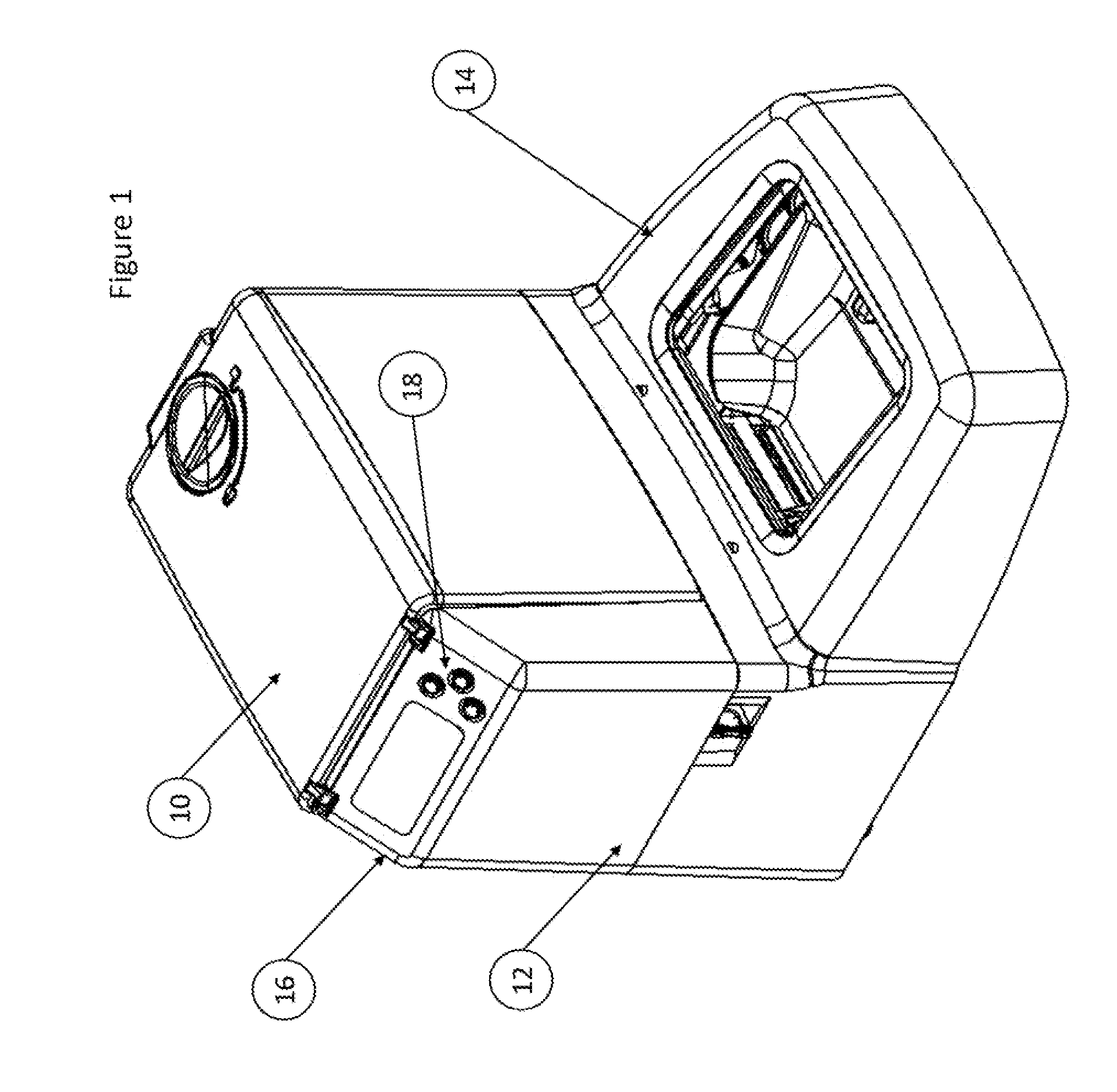Selective access control apparatus for animals using electronic recognition
a technology of electronic recognition and access control apparatus, which is applied in the direction of program control, testing/monitoring control system, instruments, etc., can solve the problems of food delivery device failure, difficult task of managing the amount of food an animal eats, and overweight and unhealthy animals, so as to minimize false operation and interference, and ensure constant and reliable operation
- Summary
- Abstract
- Description
- Claims
- Application Information
AI Technical Summary
Benefits of technology
Problems solved by technology
Method used
Image
Examples
Embodiment Construction
[0028]Now referring to the drawings, a method and system is provided that controls animal access to various different locations and / or objects and more specifically, in the preferred embodiment, provides an automated system whereby animals wearing an authorized ID tag are allowed access to various locations and / or objects, such as food contained within a food delivery device dish for example, Animals wearing a non-authorized ID tag causes the device to close preventing access thereto by the animal(s).
[0029]In the most general embodiment, a system is provided for controlling animal access to locations or objects. The system includes a location or object to be controlled, a means for preventing animal access to said location or object and a sensor system configured and arranged to selectively disengage the means for preventing animal access. The sensor system includes at least one active tag that provides authorization to access the location or object wherein the at least one tag is p...
PUM
 Login to View More
Login to View More Abstract
Description
Claims
Application Information
 Login to View More
Login to View More - R&D
- Intellectual Property
- Life Sciences
- Materials
- Tech Scout
- Unparalleled Data Quality
- Higher Quality Content
- 60% Fewer Hallucinations
Browse by: Latest US Patents, China's latest patents, Technical Efficacy Thesaurus, Application Domain, Technology Topic, Popular Technical Reports.
© 2025 PatSnap. All rights reserved.Legal|Privacy policy|Modern Slavery Act Transparency Statement|Sitemap|About US| Contact US: help@patsnap.com



